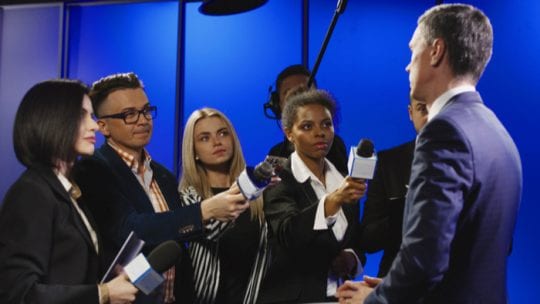
For many companies, CEOs are seen as the default spokesperson. They’re the face of the company. But that doesn’t mean the media always sees them as the best source. New data from Edelman’s Trust Barometer shows only 30% of journalists say CEOs are the most credible voice for company information, which means 70% would rather hear from someone else. When there’s major news, journalists want it from the top. But, the best storytelling is often from voices found elsewhere in the company.
If PR teams aren’t providing those voices to journalists, they’re missing a huge opportunity.
The Best Stories Aren’t in the Corner Office
Who has the best anecdotes, firsthand knowledge, and unexpected insights? It’s the engineer who just solved a billion-dollar problem, the supply chain director who spotted a crisis before it hit, or the social media manager who sees consumer sentiment shift in real time.
And let’s pause on that last one, because that Gen Z employee making your company go viral? That’s exactly who should have a camera in their face. These are the people who make a journalist’s story come alive.
CEOs Speak Strategy, Journalists Want Substance
CEOs are trained, often rightfully so, to talk big-picture strategy. They tend to stick to safe, broad themes. That works well for investor calls, but it doesn’t always make for a compelling news story.
A journalist covering a major industry shift doesn’t just want to hear that your company is “focused on innovation.” They want a real example of how your team tackled a challenge or a surprising insight no one saw coming.
So, Who Should Be Talking?
Find people in your organization who have great stories to tell. Start with the rising stars. Who’s naturally energetic and great at explaining things?
Once you’ve identified those people, train them up. The last thing you want is for a brilliant subject-matter expert to fumble an interview. That’s where media training comes in. The best spokespeople understand messaging and practice (and practice and practice) until they’re comfortable and credible.
Avoiding the “Going Rogue” Problem
However, it's important to acknowledge the risk in opening the door to more spokespeople if they’re not trained. Imagine a cybersecurity analyst who just uncovered a major threat. A journalist would love to talk to them, but if they’re unprepared, they might undersell what they found, or worse, say something that sparks a PR crisis.
To avoid this, every company should also have a clear media policy and process. That includes who can speak to the press, when they should escalate media requests, and how they should respond if a reporter reaches out directly. Employees should understand what’s on and off-limits and know when to defer to the communications team.
Elevating Hidden Voices
A communicator's job is not just to push out messages, it’s to find the best messengers. That means looking beyond the C-suite and tapping into the people who shape the story from the ground up. Once you find them, arm them with tools to help hone their message, anticipate tough questions, and speak with confidence.
The Bottom Line
A CEO has an important role in media strategy, but they shouldn’t be the only voice. The smartest companies invest in finding and training the people who truly know what’s going on. Sometimes, that’s exactly who journalists (and audiences!) actually want to hear from.
Katie Suiters is Lead Media Trainer and Strategist, Brighton Media.
